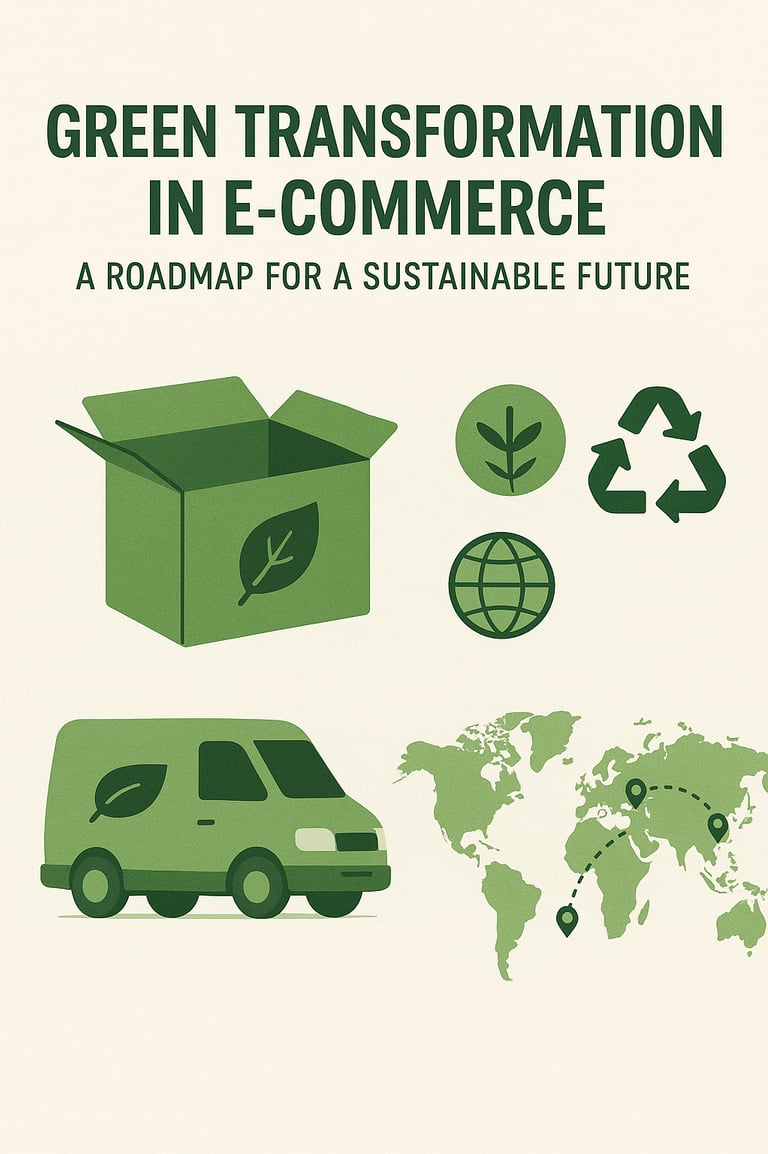Green Transformation in E-Commerce
Green Transformation in E-Commerce: A Roadmap for a Sustainable Future
3/6/20231 мин чтение
Introduction
Climate change and shifting consumer expectations are pushing businesses toward sustainability. In e-commerce, green transformation is no longer optional—it’s essential. Embracing eco-friendly practices not only helps protect the planet but also builds stronger customer loyalty and long-term competitiveness.
What is Green Transformation?
Green transformation refers to adopting strategies that minimize environmental impact. This includes reducing carbon emissions, using renewable energy, and integrating circular economy principles such as recycling and reusing materials.
Why It Matters for E-Commerce
Consumer demand: Over 70% of shoppers prefer sustainable products.
Cost savings: Long-term reductions in energy and logistics costs.
Brand reputation: Companies seen as eco-conscious gain trust and loyalty.
Strategies for Green E-Commerce
Eco-friendly packaging: Biodegradable, recyclable, or reusable materials.
Green logistics: Electric delivery vehicles, optimized routes to cut fuel usage.
Sustainable supply chains: Partnering with local and fair-trade producers.
Renewable energy adoption: Powering warehouses and data centers with solar or wind energy.
Examples of Success
Amazon: Committed to becoming carbon neutral by 2040.
IKEA: Investing in electric vehicles for last-mile delivery.
Local businesses: Innovating with plant-based packaging solutions.
Conclusion
Green transformation is not just an environmental responsibility—it’s a growth strategy. By adopting eco-friendly practices, e-commerce companies can reduce their footprint, improve customer satisfaction, and prepare for a sustainable future.


Местоположение
Головной офис :
СТЕКЛЯННАЯ крышка мАч. Сельджукский кад 24/148 Стамбул Турция
Офис в Европе:
Сириусдриф 17-27 Хофддорп, 2132WT, Нидерланды
Солипска 3/5 02-482 Варшава, Польша
Contacts
+90 536 617 25 15
info@globalvefa.com
Категории
Еда
Бытовая электроника
Домашний текстиль
Средства гигиены